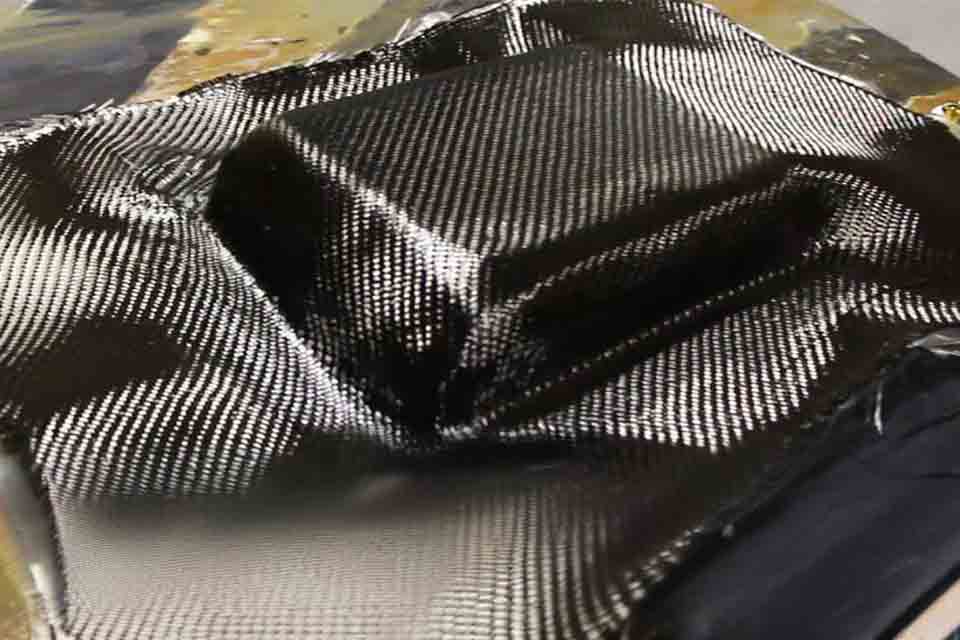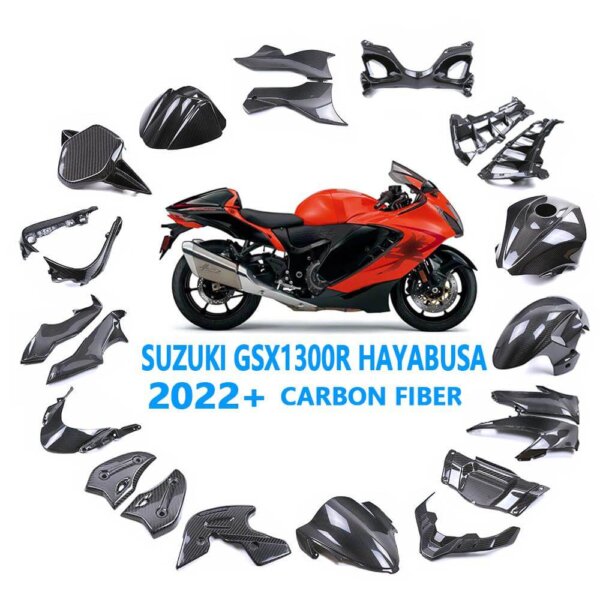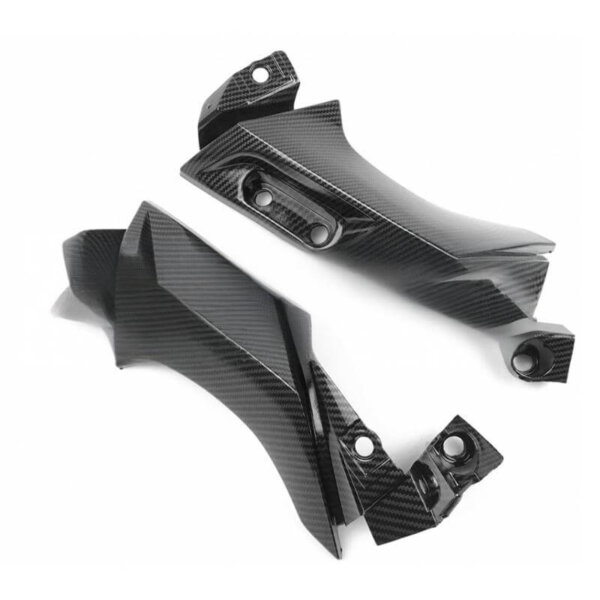Wie man Kohlefaser herstellt: 10 Schritte einfache Anleitung
Was ist Kohlefaser?
Kohlefaser ist ein starkes und leichtes Material. Es besteht aus dünnen Strängen aus Kohlenstoff. Diese Stränge sind sogar dünner als ein menschliches Haar! Kohlefaser (auch so geschrieben) wird zur Herstellung von Autos, Fahrrädern, Flugzeugen und Sportgeräten verwendet.
"Kohlefaser ist fünfmal so stark wie Stahl, wiegt aber viel weniger. Das macht sie perfekt für Dinge, die gleichzeitig stark und leicht sein müssen." - Technik-Experte
Warum Carbonfaser?
Kohlefaser hat viele gute Seiten:
- Es ist sehr stark
- Es ist sehr leicht
- Es rostet nicht
- Sie kann auf viele Arten gestaltet werden
- Sieht cool aus
Aus diesem Grund haben viele Menschen Kohlefaser herstellen Teile für Autos, Fahrräder und andere Dinge.
Was Sie zur Herstellung von Kohlefaser benötigen
Zur Arbeit mit Kohlefaserbenötigen Sie diese Werkzeuge und Materialien:
| Werkzeuge | Materialien |
|---|---|
| Schere | Kohlefasergewebe |
| Handschuhe | Epoxidharz |
| Anrührbecher | Wachs freigeben |
| Rührstäbe | Schimmel |
| Bürste | Plastikfolie |
| Klemme | Sandpapier |
Grundlegende Schritte zur Herstellung von Kohlefaserteilen
1. Planen Sie Ihr Projekt
Bevor Sie beginnen mit Kohlefasermüssen Sie wissen, was Sie machen wollen. Beginnen Sie mit einfachen Formen. Große oder harte Formen können sein zeitaufwendig.
2. Eine Form herstellen oder besorgen
Der Schimmel ist das, was Ihr Kohlefaserteile ihre Form. Sie können:
- Kaufen Sie ein fertiges Schimmel
- Mach einen aus Holz
- Verwenden Sie ein altes Teil als Schimmel
Setzen Trennwachs auf Ihrem Schimmel also die Kohlefaser wird sich nicht daran halten.
3. Schneiden Sie das Kohlefaser-Gewebe
Kohlefasergewebe wird in Blättern mit unterschiedlichen weben Arten. Die häufigste ist eine Köper Schnittmuster. Schneiden Sie den Stoff auf Ihr Schimmel und ein bisschen mehr an den Rändern.
4. Mischen des Harzes
Epoxidharz ist das, was die Kohlefaser hart und stark. Die meisten Harz kommt als zweiteilig mischen:
- Gießen Sie Teil A und Teil B in eine Tasse
- Gut, aber nicht zu schnell mischen (um eine Luftblasen)
- Benutzen Sie es bald, da es anfängt, hart zu werden.
Seien Sie sicher! Tragen Sie Handschuhe, wenn Sie arbeiten mit Harz.

5. Befeuchten Sie die Kohlefaser
Jetzt kommt die Nasslaminieren Schritt:
- Setzen Sie Ihr Kohlenstoffgewebe an einer flachen Stelle
- Verwenden Sie einen Pinsel, um nass den Stoff mit Harz
- Vergewissern Sie sich, dass alle Kohlefaser wird nass
- Nicht zu viel verwenden Harz - gerade genug, um nass alle Faser
6. Auf die Form legen
Legen Sie die nass Kohlefaser auf Ihrem Schimmel:
- Beginnen Sie an einem Ende und streichen Sie es nach unten.
- Drücken Sie alle Luftblasen
- Fügen Sie weitere Schichten hinzu, wenn Sie ein stärkeres Teil benötigen
- Jede neue Ebene ist Teil der Auflegen
7. Überschüssiges Harz entfernen
Zu viel Harz macht Ihr Teil schwer und weniger stabil. Verwenden Sie ein Kunststoffwerkzeug zum Herausdrücken Extra-Harz.
8. Druck ausüben
Sie müssen komprimieren Die Kohlefaser wenn es trocknet:
- Verwenden Sie ein Vakuumbeutel Methode
- Oder verwenden Sie Klammer und flache Bretter
- Oder versuchen Sie Vakuuminfusion für große Teile
9. Lassen Sie es heilen
Jetzt warten Sie auf die Harz Zu Heilung:
- Prüfen Sie Ihr Harz Box für Heilung Zeit
- Die meisten brauchen 24 Stunden bei Zimmertemperatur
- Halten Sie das Teil ruhig, während es heilt
- Manche Menschen verwenden Hitze und Druck Zu Heilung Schneller
10. Aus der Form nehmen
Nach dem Harz völlig hart ist:
- Entfernen Sie alle Verpackungen oder Beutel
- Ziehen Sie vorsichtig die Fertigteil von der Schimmel
- Schneiden Sie die rauen Kanten
- Schleifen Sie alle Stellen, die geglättet werden müssen
Arten von Kohlenstofffasern
Nicht alle Kohlefaser ist die gleiche. Hier sind die wichtigsten Arten:
- PAN (hergestellt aus Polyacrylnitril)
- Pech (hergestellt aus Öl)
- Viskose (mittlerweile weniger verbreitet)
Die meisten Heimanwender arbeiten mit PAN-basierten Kohlefaser.
Verschiedene Wege zur Herstellung von Kohlefaserteilen
Es gibt mehrere Möglichkeiten der Arbeit mit Kohlefaser. Hier sind sie, von einfach bis schwer:
Nass-Layup
Das haben wir soeben besprochen. Dies ist die häufigste Methode für Heimanwender, um Kohlefaserteile herstellen.

Pre-Preg-Verfahren
Pre-Preg oder vorimprägniert Kohlefaser kommt mit Harz bereits enthalten. Das muss es auch:
- Bleibt kalt, bis Sie es benutzen
- Erhitzt werden zu Heilung
- Benötigt oft eine Autoklav (ein großer heißer Ofen)
Das ist die Art und Weise, wie viele Pro kohlefaserverstärkt Teile hergestellt werden.
Vakuum-Infusion
Mit dieser Methode:
- Die trockene Kohlefasergewebe wird auf die Schimmel
- Es ist in einem Beutel versiegelt
- Luft wird herausgesaugt
- Harz wird eingezogen nach aufgießen. alle Faser
Dies ist gut für große Teile und kann sehr starke Ergebnisse liefern.
Echte Kohlefaser von Grund auf neu herstellen
Die obigen Schritte zeigen, wie man mit Kohlefasergewebe das bereits hergestellt ist. Aber wie funktioniert Kohlefaser selbst gemacht werden? Hier ist die Herstellung von Kohlenstofffasern Prozess:
- Beginnen Sie mit einer Polymer wie Polyacrylnitril
- Ziehen Sie es in dünne Draht Zeichenketten
- Erhitzen Sie diese Saiten bei hoher Hitze ohne Luft
- Dadurch werden die Zeichenketten zu Kohlenstoff
- Der Kohlefaser beginnt als Single heraus Strang Fasern
- Diese sind zu einem Stoff gewebt
Dies erfordert spezialisierte Ausrüstung und wird in Fabriken hergestellt.
Sicherheitstipps für die Arbeit mit Kohlefaser
Arbeiten mit Kohlefaser kann Spaß machen, aber man muss sicher sein:
- Bei Berührung Handschuhe tragen Harz
- Tragen Sie eine Maske, um das Einatmen zu vermeiden Kohlefaserstaub
- Arbeiten Sie in einem Raum mit guter Luftzirkulation
- Halten Sie Lebensmittel von Ihrem Arbeitsbereich fern
- Verschmutzungen sofort beseitigen
Projekte zum Ausprobieren
Wenn Sie möchten, dass lernen, wie man Kohlenstoff herstellt Teile, fangen Sie klein an:
- Eine einfache flache Platte
- Eine Handytasche
- Eine kleine Schachtel
- Ein Fahrradteil
Wenn Sie besser werden, können Sie komplexere Kohlefaserteile.
Häufige Fehler, die Sie vermeiden sollten
Viele Menschen machen diese Fehler:
- Zu viel verwenden Harz
- Nicht alles bekommen Luftblasen aus
- In Eile sein während Heilung Zeit
- Ein Teil zu dünn und schwach machen
- Versuchen Sie eine zu komplexe Form für Ihre Fähigkeiten
Kohlefaser im Vergleich zu anderen Materialien
Wie funktioniert Kohlefaser sich mit anderen messen technische Materialien?
| Eigentum | Kohlefaser | Aluminium | Stahl | Plastik |
|---|---|---|---|---|
| Gewicht | Sehr leicht | Licht | Schwer | Licht |
| Zugfestigkeit | Sehr hoch | Medium | Hoch | Niedrig |
| Komprimierung Stärke | Medium | Medium | Hoch | Niedrig |
| Biegsamkeit Stärke | Hoch | Medium | Medium | Niedrig |
| Modulus | Hoch | Medium | Hoch | Niedrig |
| Kosten | Hoch | Medium | Niedrig | Sehr niedrig |
Wo Carbonfaser verwendet wird
Kohlefaser wird an vielen Stellen verwendet, wo ein leichtes Material erforderlich ist:
- Luft- und Raumfahrt Teile für Flugzeuge
- Automobilindustrie Rennsportteile
- Sportartikel wie Tennisschläger und Golfschläger
- Fahrräder und Fahrradteile
- Medizinische Geräte
- Musikanlagen
Fortgeschrittene Kohlenstofffaser-Methoden
Wenn Sie sich wirklich für Herstellung von Kohlefasernkönnten Sie versuchen:
- Mit einer CNC zur Herstellung präziser Gussformen
- Herstellung Hochleistungs Teile mit speziellen Legemustern
- Hinzufügen anderer Materialien zur Herstellung von Verbundwerkstoffe
- Verwendung verschiedener Arten von Harz wie Polyesterharz oder Duroplast Typen
Abschließende Gedanken
Dinge herstellen mit Kohlefaser kann Spaß machen und lohnend sein. Fangen Sie einfach an, seien Sie geduldig, und bald werden Sie erstaunliche Kohlefaserteile!
Der Komplexität des Teils entscheidet darüber, wie schwer es ist, sie herzustellen. Mit etwas Übung können Sie Kostengünstig und cool Fertigprodukt Gegenstände, die sowohl stark als auch leicht sind.
Möchten Sie mehr erfahren? Besuchen Sie unsere benutzerdefinierter Verbundstoff Seite oder lesen Sie unseren Leitfaden über wie man eine Kohlefaserform herstellt.
Sind Sie bereit für den Start? Holen Sie sich Material aus unserem Kohlenstofffabrik oder erfahren Sie mehr über Herstellung eigener Kohlefaserteile.
Rufen Sie uns an/Whatsapp: +86 13626191009
E-Mail: [email protected]




